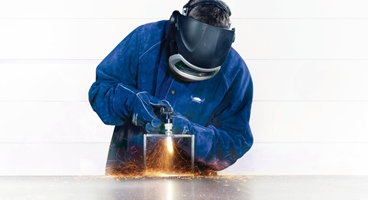

Various gases such as acetylene, natural gas, hydrogen, propane, propylene and hydrogen can be used as a fuel for heating, transportation and – combined with oxygen – various industrial applications. Most fuel gases are composed in whole or in part of the combustibles hydrogen, carbon monoxide, methane, ethane, propane, butane and oil vapours.
The most common industrial applications are cutting and heating. With a fuel gas cutting process, a flame heats metal to its melting point and the metal is then cut with a jet of oxygen. With a fuel gas heating process, the heat produced is used to drive off moisture and other impurities prior to welding or to soften the metal so that its shape can be changed.
Fuel gas processes have many applications other than cutting and heating. These include brazing, soldering, carbon coating, surface cleaning, surface hardening, preheating, texturing and powder spraying. They can even be used for underwater cutting.
Each fuel gas has a different ratio of carbon to hydrogen atoms, which means that different amounts of oxygen are needed to burn the gas efficiently. This ratio of fuel to oxidant affects the temperature of the flame in cutting and welding applications, as well as the flammability and explosive limits.
Our experts have many decades of experience in the use of fuel gases for welding and cutting applications. Not only do we supply the full range of compressed gases in cylinders, we can also help you optimise the flame temperature and oxygen jet and advise on the appropriate safety precautions. In addition, we offer the full range of welding and cutting equipment.
More information on individual fuel gases:
